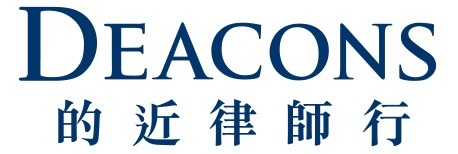As Hong Kong emerges after a few challenging years, including a long period of isolation due to some of the strictest Covid-19 restrictions in the world, the protection of intellectual property rights in the territory remains essential for businesses to maintain their competitive edge and safeguard their valuable assets. Two recent opposition decisions that we handled on behalf of a global hygiene and healthcare company, and an international biopharmaceutical company, resulted in wins for the clients. They illustrate the importance of submitting pertinent and compelling evidence in oppositions, and the possibility of relying on circumstantial evidence in bad faith cases.
TENA v TENEI
The Hong Kong Trade Mark Registry recently issued an opposition decision in favour of Essity Hygiene and Health Aktiebolag, owner of the mark “TENA”. The other party had applied for the mark “” in respect of, amongst other items, “diapers for incontinence; pants, absorbent, for incontinence; babies’ diapers; babies’ diaper pants”, which conflict with Essity’s products including “diapers for incontinence (for medical purposes); napkins for incontinence; absorbent pants and panties for incontinence; sanitary panties”.

In comparing the marks, the Registry held that there was likelihood of confusion. The Registry found the marks to have a medium to high degree of visual similarity, namely the same first three letters “TEN” in the same sequential order. The difference in the respective endings is insufficient to make consumers aware that the marks are different. Aurally, the marks are pronounced similarly: “TEN-NAH” and “TEN-NAY” respectively.
In considering likelihood of confusion, “the more distinctive an earlier mark is, the greater will be the likelihood of confusion”. The Registrar found that Essity had acquired measurable commercial success in establishing goodwill and reputation of its mark “TENA” in Hong Kong, particularly in respect of “disposable products of incontinence diapers, pads, etc.”, by the time the target application was filed. The mark had, therefore, acquired an enhanced degree of distinctive character through use. Essity was able to establish a high degree of public recognition of Essity and its mark in Hong Kong.
Essity submitted substantial evidence in support of the opposition including:
- History of Essity and details of the extensive use of its marks in Hong Kong and overseas;
- Substantial and consistent sales figures for Hong Kong;
- Substantive and consistent advertising figures for Hong Kong;
- Selected sample invoices;
- Selected sample advertising materials;
- Evidence of the significant effort and expense incurred by Essity in promoting its goods with reference to its marks including Hong Kong television commercials (e.g. TVB Jade Channel), newspapers (e.g. Am730, Sky Post, Headliner), digital banners (e.g. Yahoo online ads, Google online ads, myTV Super banner, ViuTV online banner, Programmatic banner, HKTVmall banner), MTR ads, outdoor advertisements (e.g. ads on buses), product catalogues, pamphlets, social media platforms (e.g. Facebook and YouTube), point of sale materials, posters, marketing events, and direct marketing;
- A list of Essity’s local distributors, which are mostly well-known retail chains in Hong Kong, and their respective years of distribution;
- Google search results showing that a search against “TEN + diapers” revealed results directing to Essity’s mark “TENA”;
- Example of Essity’s diaper products with reference to its mark “TENA” winning the “Most Popular Products as Chosen by Medical Practitioners Award” awarded by the Hong Kong Health Care Federation; and
- A list of foreign registrations for Essity’s marks.
This decision is noteworthy because it highlights the importance of appropriate strategies to suit the facts and strengths of a particular case, including the nature and volume of evidence to be submitted. More is not always better; in this case, we focused on relevant and persuasive evidence to demonstrate the enhanced distinctiveness of the client’s mark.
YESCARTA v BESCARTA
In this case, Kite Pharma, Inc. (a subsidiary of Gilead Sciences, Inc.) successfully opposed a Hong Kong trade mark application by a Chinese company JW Therapeutics (Shanghai) Co., Ltd. (上海藥明巨諾生物科技有限公司) based on the ground of bad faith. Bad faith is regarded as a serious ground of opposition requiring a high standard of proof. This case illustrates that bad faith can be established based on circumstantial evidence. The case concerned the following marks:-

Both parties engage in research and development of oncological CAR-T cell therapy. In particular, the Opponent has been using its marks before the filing date of the Applicant’s Mark. Goods and services bearing, or by reference to, the Opponent’s Marks have been widely reported and acclaimed, and this was supported by evidence.
On comparison of the marks, the Registrar observed that both the Applicant’s Mark and the Opponent’s Marks consist of 8 characters, of which only the first character is different; the remaining 7 characters are identical and arranged in the same order. Therefore, the Registrar considered the marks to be visually and aurally similar to a high degree.
The Applicant argued that the figurative element in “
The Registrar drew an inference from the evidence that since the Opponent and Applicant are direct competitors in the field of CAR-T cell therapy, the Applicant should reasonably have known of the existence of the Opponent’s Marks.
Further, the Registrar considered the Opponent’s evidence from Acronym Finder website and rejected the Applicant’s claim that the letters in common between the respective marks, “CARTA”, connote “CAR-T” and are descriptive in nature. Instead, the Registrar observed that the Applicant’s Mark and the Opponent’s Marks are highly similar, such that it can be inferred that one mark is derived from the other in the absence of acceptable evidence to the contrary. The Applicant failed to adduce any evidence to explain the origin of its mark.
Based on the evidence submitted, the Registrar held that the Applicant had conducted itself dishonestly and had applied for registration of the Applicant’s Mark in bad faith.
Bad faith is a serious allegation that must be proved and in most cases, it is difficult for trade mark owners to adduce direct evidence of bad faith on the part of the applicant. However, the Registrar must make an overall assessment taking into account all the factors relevant to a particular case. This decision is a useful reminder that in certain cases where highly similar marks are involved, trade mark owners may be able to rely on circumstantial evidence to establish a claim of bad faith. However, it will very much depend on the specific facts.
Conclusion
Hong Kong has a comprehensive IP legal framework. As our borders re-open post-pandemic, it is important to remain vigilant and proactive in protecting your rights, monitoring potential infringements, and making use of available enforcement mechanisms.






